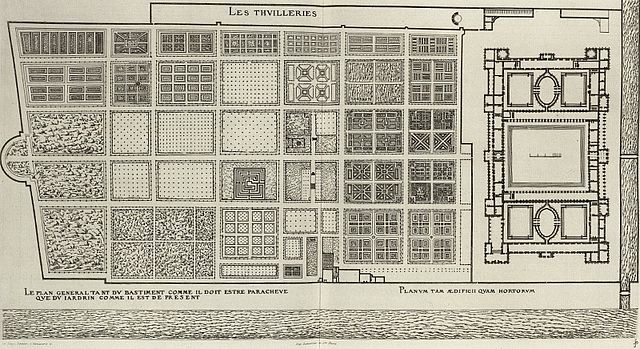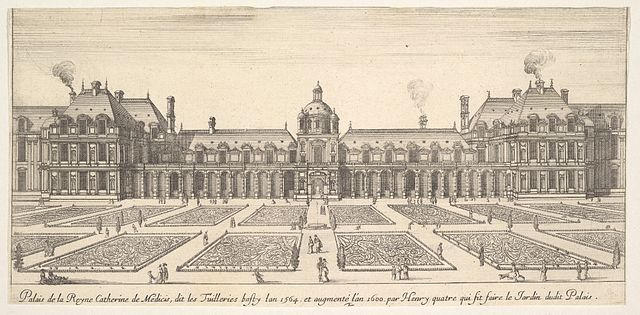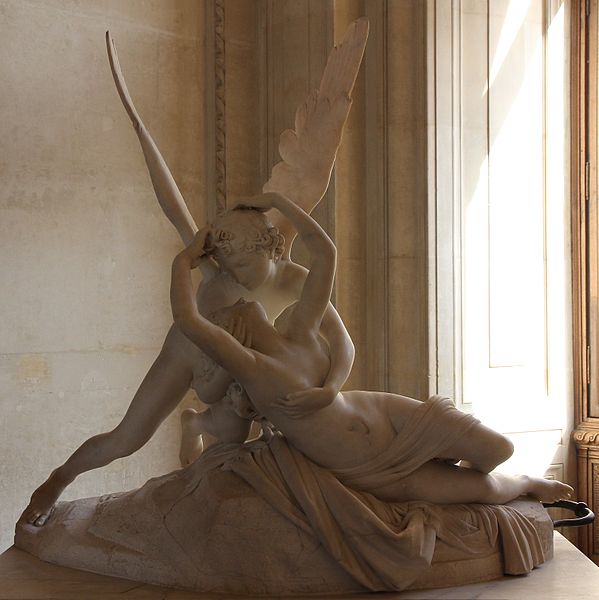The Tuileries Garden is a public garden between the Louvre and the Place de la Concorde in the 1st arrondissement of Paris, France. Created by Catherine de' Medici as the garden of the Tuileries Palace in 1564, it was opened to the public in 1667 and became a public park after the French Revolution. Since the 19th century, it has been a place for Parisians to celebrate, meet, stroll and relax.
Grande Allée of the Tuileries Garden, looking towards the Place de la Concorde and the Arc de Triomphe
Plan for the palace and gardens by Jacques I Androuet du Cerceau, 1576–1579
Garden of Louis XIII in 1649–51
Tuileries Garden of Le Nôtre in the 17th century, looking west toward the future Champs Élysées, engraving by Perelle
The Louvre, or the Louvre Museum, is a national art museum in Paris, France. It is located on the Right Bank of the Seine in the city's 1st arrondissement and home to some of the most canonical works of Western art, including the Mona Lisa, Venus de Milo, and Winged Victory. The museum is housed in the Louvre Palace, originally built in the late 12th to 13th century under Philip II. Remnants of the Medieval Louvre fortress are visible in the basement of the museum. Due to urban expansion, the fortress eventually lost its defensive function, and in 1546 Francis I converted it into the primary residence of the French kings.
The Louvre Museum
Aerial view of the Louvre Palace and Tuileries Park
Below-ground portions of the medieval Louvre are still visible.
Antonio Canova's Psyche Revived by Cupid's Kiss was commissioned in 1787 and donated in 1824.








